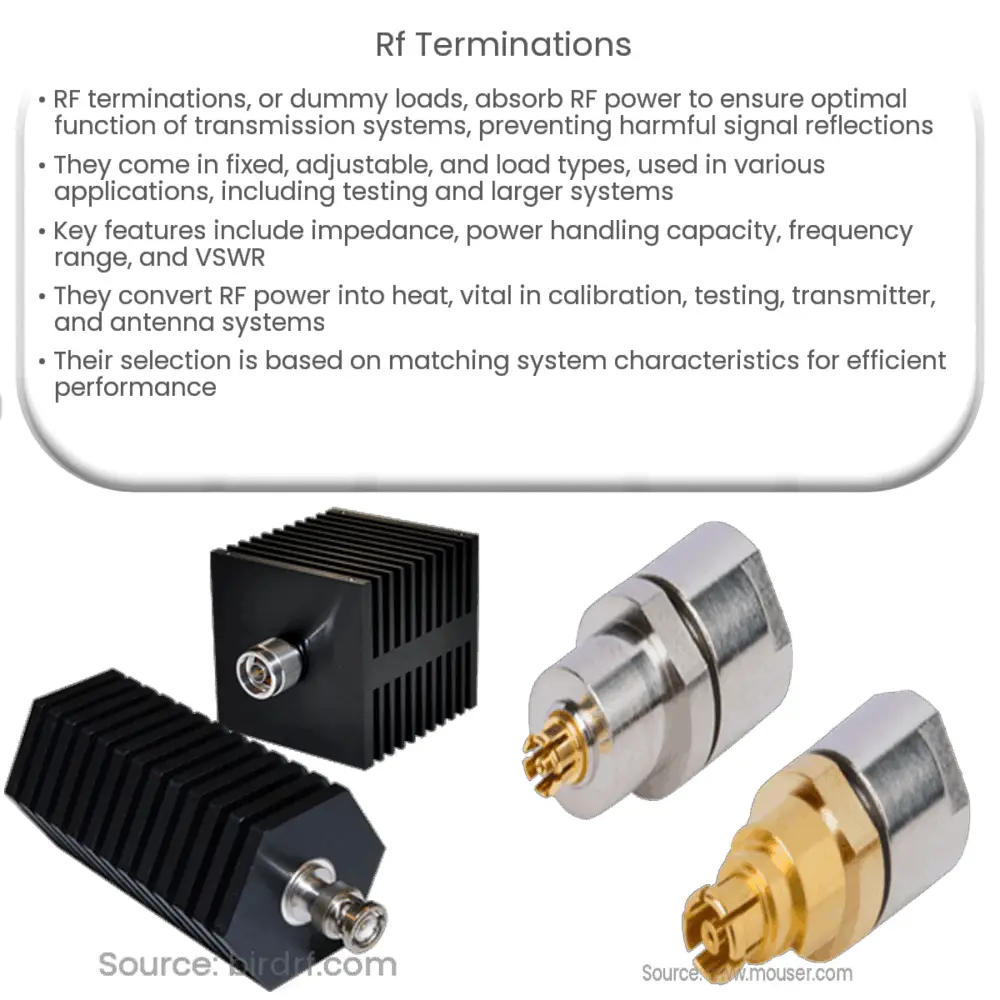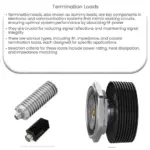Explore the role of RF terminations in microwave systems, their types, features, applications, and key considerations in selecting them.

Introduction to RF Terminations
Radio frequency (RF) terminations, sometimes known as dummy loads, play a crucial role in the world of RF and microwave systems. These devices are engineered to absorb RF power safely and effectively, ensuring that the transmission lines and their connected systems function optimally. RF terminations prevent any RF power from reflecting back into the transmission line, which could otherwise cause damaging interferences or distortions.
The Need for RF Terminations
RF terminations become essential in instances where an RF signal is not intended to be transmitted but absorbed. The effective power handling capacity of these devices makes them indispensable in a range of applications, from testing and calibration procedures to their incorporation into larger systems. Without the appropriate termination, RF signals could reflect off the ends of transmission lines, creating standing waves and causing potential harm to the devices.
Types of RF Terminations
- Fixed Terminations: As the name implies, these devices provide a constant level of impedance, regardless of the frequency. This is the most common type and is used in a multitude of applications.
- Adjustable Terminations: These can be tuned to offer variable impedance. This flexibility makes them ideal for testing and adjusting RF and microwave systems.
- Load Terminations: These terminations absorb all incident power and prevent reflected waves. They are often used in transmitter and antenna systems.
Key Features of RF Terminations
RF terminations are characterized by several critical attributes, including their impedance, power handling capacity, frequency range, and the VSWR (Voltage Standing Wave Ratio). The impedance typically matches the characteristic impedance of the system in which they are installed (commonly 50 Ohms in many RF systems), ensuring minimal reflections. The power handling capacity determines the maximum amount of RF power the device can safely absorb, often measured in Watts. The frequency range, usually specified in GHz, is the span of frequencies the device can effectively work with. The VSWR indicates how effectively the device absorbs RF power, a low VSWR signifies minimal reflection.
In the next section, we will delve deeper into the working principle of RF terminations, their applications, and considerations to keep in mind while choosing the right RF termination for a specific application.
Working Principle of RF Terminations
RF terminations operate on a straightforward principle: they convert the incident RF power into heat, thereby preventing any reflected power back into the transmission line. This conversion is achieved through the use of resistive elements that have an impedance matching the characteristic impedance of the transmission line. The resistive element is thermally and electrically stable, ensuring reliable operation over a wide range of frequencies and power levels.
Applications of RF Terminations
- Testing Equipment: RF terminations are used extensively in the calibration and testing of RF and microwave devices. They ensure accurate measurements by providing a precise load for the device under test.
- Transmitter Systems: In transmitter systems, RF terminations are used to absorb power and protect the system from reflected waves which could distort signals and damage components.
- Antenna Systems: RF terminations are used in antenna systems to prevent reflections at the end of transmission lines, enhancing the overall performance of the system.
Considerations When Choosing RF Terminations
When selecting an RF termination for a particular application, several factors need to be considered. The characteristic impedance should match the system impedance to minimize reflections. The power handling capacity must be adequate for the intended application to prevent overheating or damage. The frequency range should be suitable for the system’s operation. Lastly, the VSWR should be as low as possible to ensure minimal reflection.
Conclusion
In conclusion, RF terminations play a pivotal role in ensuring the smooth operation of RF and microwave systems. By effectively absorbing RF power and preventing damaging reflections, these devices are a cornerstone of reliable and efficient system design. Whether it’s for testing and calibration, transmitter systems, or antenna applications, the correct choice of RF termination can make a substantial difference in the overall performance of the system. As RF technologies continue to advance and find new applications, the importance of RF terminations will only continue to grow.




